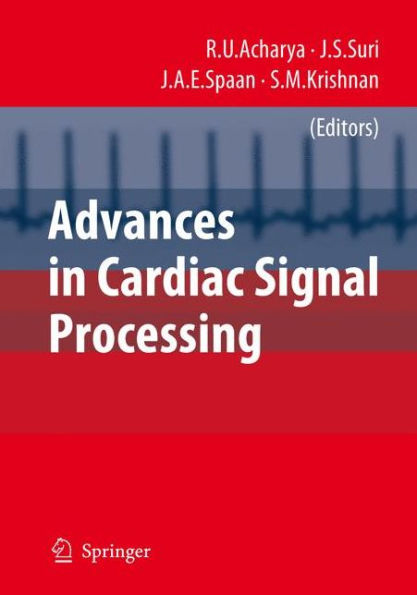Advances in Cardiac Signal Processing
Various disciplines have been benefited by the advent of high-performance computing in achieving practical solutions to their problems and the area of health care is no exception to this. Signal processing and data mining tools have been developed to enhance the computational capabilities so as to help clinicians in diagnosis and treatment. The electrocardiogram (ECG) is a representative signal containing inf- mation about the condition of the heart. The shape and size of the P-QRS-T wave and the time intervals between various peaks contains useful infor- tion about the nature of disease a?icting the heart. However, the human - server cannot directly monitor these subtle details. Besides, since biosignals are highly subjective, the symptoms may appear at random in the timescale. The presence of cardiac abnormalities are generally reffected in the shape of ECG waveform and heart rate. However, by the very nature of biosignals, this reffection would be random in the timescale. That is, the diseases may not show up all the time, but would manifest at certain irregular (random) intervals during the day. Therefore the study of ECG pattern and heart rate variability has to be carried out over extended periods of time (i. e. , for 24 hours). Naturally the volume of the data to be handled is enormous and its study is tedious and time consuming. As a consequence, the possibility of the analyst missing (or misreading) vital information is high.
"1101510191"
Advances in Cardiac Signal Processing
Various disciplines have been benefited by the advent of high-performance computing in achieving practical solutions to their problems and the area of health care is no exception to this. Signal processing and data mining tools have been developed to enhance the computational capabilities so as to help clinicians in diagnosis and treatment. The electrocardiogram (ECG) is a representative signal containing inf- mation about the condition of the heart. The shape and size of the P-QRS-T wave and the time intervals between various peaks contains useful infor- tion about the nature of disease a?icting the heart. However, the human - server cannot directly monitor these subtle details. Besides, since biosignals are highly subjective, the symptoms may appear at random in the timescale. The presence of cardiac abnormalities are generally reffected in the shape of ECG waveform and heart rate. However, by the very nature of biosignals, this reffection would be random in the timescale. That is, the diseases may not show up all the time, but would manifest at certain irregular (random) intervals during the day. Therefore the study of ECG pattern and heart rate variability has to be carried out over extended periods of time (i. e. , for 24 hours). Naturally the volume of the data to be handled is enormous and its study is tedious and time consuming. As a consequence, the possibility of the analyst missing (or misreading) vital information is high.
169.99
In Stock
5
1

Advances in Cardiac Signal Processing
468
Advances in Cardiac Signal Processing
468Hardcover(2007)
$169.99
169.99
In Stock

Product Details
| ISBN-13: | 9783540366744 |
|---|---|
| Publisher: | Springer Berlin Heidelberg |
| Publication date: | 05/18/2007 |
| Edition description: | 2007 |
| Pages: | 468 |
| Product dimensions: | 6.10(w) x 9.25(h) x 0.04(d) |
From the B&N Reads Blog
